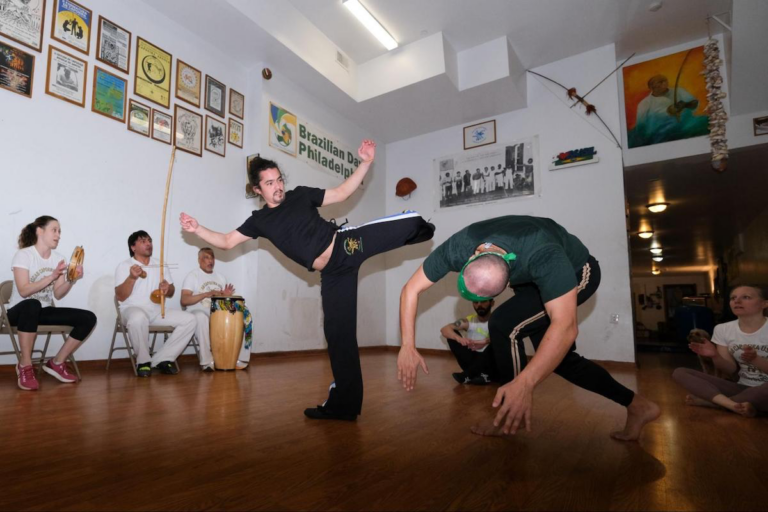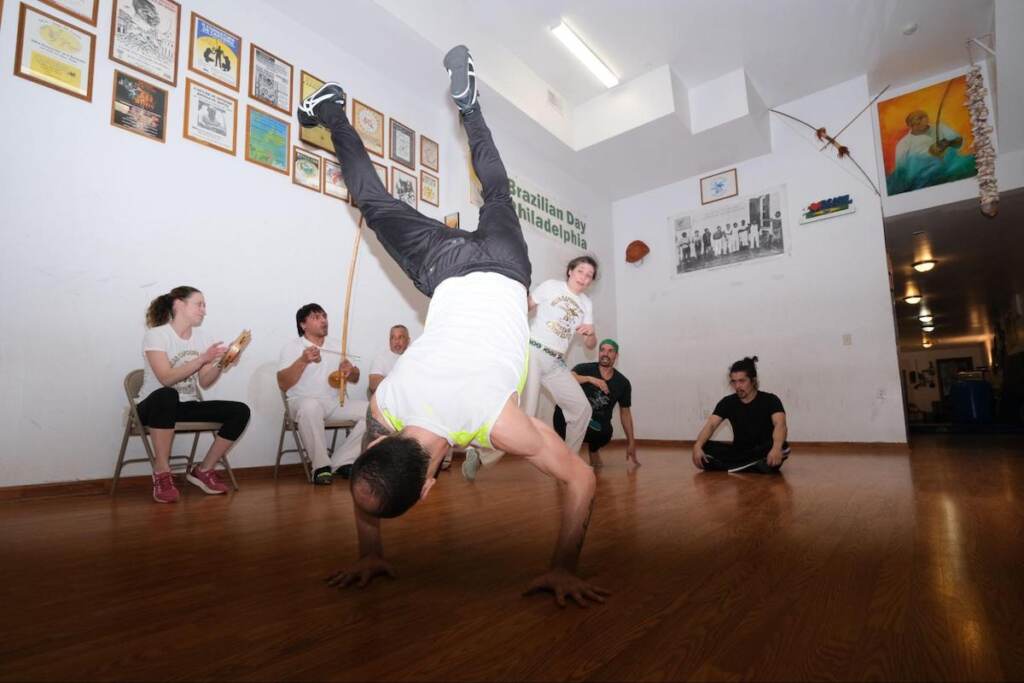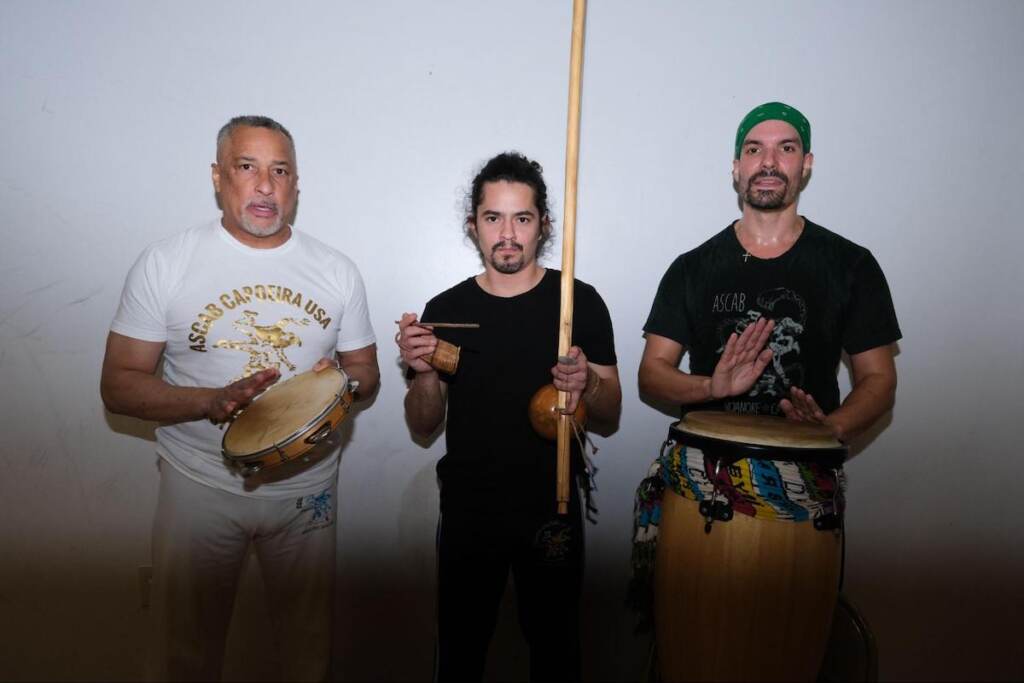Capoeira’s roots spread wide in Philadelphia
In Philadelphia, there’s a hole-in-the-wall studio that’s hard to walk past without looking in. If you go at the right time — you’ll hear it before you see it.
Listen 7:39
Ricardo Melendez (right) and Peter DiGeronimo, members of Project Capoeira, throw kicks in the circle, also known as the “roda”. (Alan Jinich/WHYY)
This story is from The Pulse, a weekly health and science podcast.
Find it on Apple Podcasts, Spotify, or wherever you get your podcasts.
In Philadelphia’s Chinatown, there’s a hole-in-the-wall studio called Project Capoeira that’s hard to walk past without looking in. It’s decorated with bright yellow flowers, ribbons, and a big Brazilian flag hangs from the window. If you come at the right time, you’ll hear it before you see it.
Inside, there’s a crowd warming up for a Brazilian martial art called capoeira. The all-encompassing sport looks like an acrobatic dance with handstands and somersaults, kicks and spins – all driven by traditional instruments like the atabaque (hand drum), pandeiro (tambourine), and single stringed bow (berimbau). But capoeira isn’t really a dance; it’s practice for a fight. And the goal is to dominate space by driving the other person out of the center of the circle.
The roots of capoeira and its masquerade as a dance go back to 1500s colonial Brazil, a time when hundreds of thousands of Africans were trafficked across the Atlantic by Portuguese settlers and enslaved along with Indigenous people.
“When the slaves came to Brazil with Indians, they just fused together,” said Adenilson Dos Santos, the club director. “We got that gift from Africa – the music and the rhythm,” Dos Santos, or Mestre Doutor as his students call him, brought capoeira to Philadelphia nearly 30 years ago.
By fusing African music with Indigenous acrobatics, capoeira became a way for enslaved people to practice for a fight while not catching the eyes of their oppressors. Over time, this ritual also became a means for preserving identity and spirituality.
“The music is probably the biggest difference between this martial art and other martial arts,” said student Eduardo Zancanaro. He immigrated to the U.S. from Brazil as a child.
“When I came here, I just felt like I reconnected with my roots. It kind of felt like going somewhere that I’ve been before a long time ago,” Zancanaro said.

Even after slavery was abolished in Brazil in 1888, capoeira became criminalized, and the only way of practicing for decades was to do it in secret. It wasn’t until the 1930s that the practice became legal. But even then, police cracked down on capoeira groups because they associated the sport with crime.
“The Brazilian government, especially the militaries, they came in with no warnings, hitting people, running their horses in the middle of the circle. It was really disrespectful,” Dos Santos said.
Subscribe to The Pulse
Despite the challenges, capoeira now thrives as one of Brazil’s most popular sports. In 2014, it was granted UNESCO cultural heritage status. For many, it continues to be a symbol of free expression and resilience in the face of oppression. Dos Santos’ students alone have spread all over the world, opening their own clubs.
“California, Arizona, Ohio, North Carolina,” Dos Santos said. The list goes on to include places like China, Japan, and Guatemala. “They all came from Philly… we’re still fighting for something!”

When I first approached Dos Santos about doing a story on Project Capoeira he insisted that I try it myself. After passing on his initial offer — I decided to come back. I nearly fell on my back trying handstands and could barely get my legs high enough for a decent kick. But when I entered the center of the circle, everyone took it easy on me.
By the end of class, there were no winners or losers – just a half hour sermon from Dos Santos about how to dominate space:
“If you play tall people – Him is tall!” Dos Santos pointed at me. “Tall people need a lot of space to move. So your job is to take the space away right away. If you don’t have space you cannot do that much.”
“I can’t do that much anyway,” I joked.
Dos Santos emphasized that capoeira is all about finding balance within the chaos of the circle – from fighting pair to pair, between the kicks and the rhythm – but also within oneself. And then applying that balance to the rest of your life.
WHYY is your source for fact-based, in-depth journalism and information. As a nonprofit organization, we rely on financial support from readers like you. Please give today.






